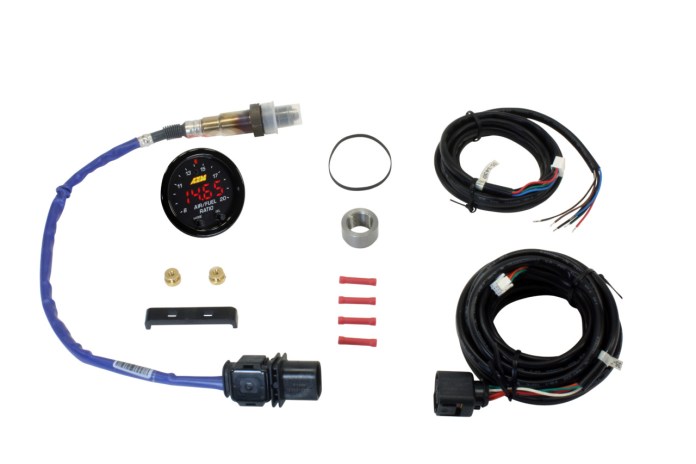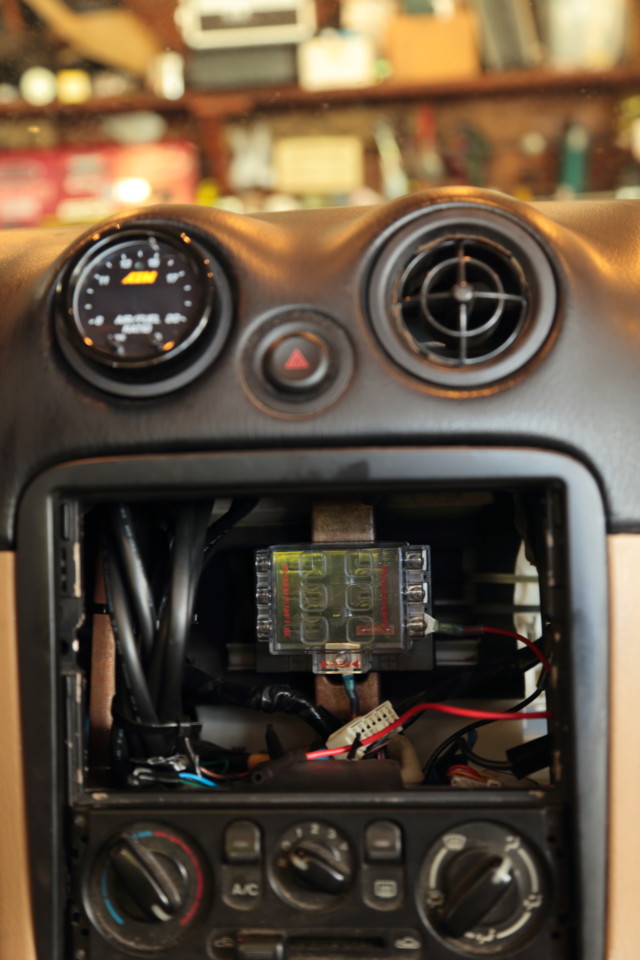
When AEM released its first wideband air-fuel-ratio gauge, just a little more than a decade ago, car tuning was beginning to emerge as the best way to maximize performance from your engine. AEM, which stands for Advanced Engine Management, had been tuning cars for more than 10 years before that, so it recognized the need.
At the time, about the only place you could find a wideband setup for measuring AFR in a vehicle’s exhaust system, was at a dynamometer facility geared for performance tuning. AEM had just launched a single and dual wideband controller and thought, why not put the controller in the gauge? At the time, AEM didn’t make gauges, but it took the initiative and built one — and then sold a gazillion of them to racers and performance enthusiasts the world over.
“We thought it was a great idea to be able to see your air-fuel ratio, and it was kind of an afterthought. Since then it’s arguably become one of the best selling products in performance and racing because of what it provides,” said AEM’s director of marketing and PR Lawson Mollica. “We took something that was thousands of dollars and a rarity, basically only seen at dyno shops, and made it available to racers to put in their racecars and have access to it for a couple of hundred bucks.”

Now, AEM has developed a new wideband air-fuel-ratio sensor controller gauge and it’s just hitting the market now. The new X series wideband controller features a new a single-board design with 100 percent digital technology, which provides a blisteringly fast response rate — fewer than 20 milliseconds.
With analog-style widebands, the signals are typically filtered to reduce noise and other irregularities, but filters also slow down the response time and smooth out the signal. They still provide an accurate air-fuel reading, but they miss the finer details. The new X series doesn’t miss anything, including transitional conditions like tip-in and on-off throttle, not to mention irregularities such as momentary lean conditions or misfires, and if it’s connected to AEM’s AQ-1 logger or its Infinity ECU, all those anomalies are recorded so you can diagnose and repair those conditions.
“When we looked at updating our technology, because we pioneered this concept of a wideband gauge you can have in your vehicle, it couldn’t just be better than what we had made,” Mollica said. “It had to be the best on the market, so that was our target, and it was a very, very hard target.”
The new gauge still measures 2 1/16 inches in diameter, but it’s much thinner than the first generation gauge, which opens more options for mounting. The digital display is 87 percent larger for greater legibility in race conditions. It also has mode and select buttons on its face to allow for displaying AFR, lambda and O2 percentage. It even displays out to three digits behind the decimal point if you want.
The new X series controller gauge uses the latest Bosch sensor, which is calibrated from the factory, but it also gives the user the ability to “free air” calibrate it if necessary. It’s simple to do, Mollica said, using the buttons on the gauge face.
“It’s just an amazing little gauge and we’re really excited about it,” he said. “It takes what we pioneered over a decade ago and really resets the bar for this type of technology.”
As you will see in the photos below, installation of the X series as a standalone gauge is every bit as easy as the previous generation. We asked to follow NASA SoCal racer James Brown’s installation on his Spec Miata.
RESOURCES

































